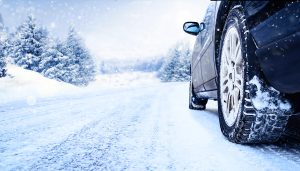
Winter transforms the roads into challenging terrains, with snow, ice, and freezing rain turning routine drives into potential risks. Understanding and preparing for these hazards is crucial for drivers to ensure safety and legal protection. Here’s a comprehensive guide to navigating winter driving conditions, minimizing risks, and addressing accidents if they occur.
Understanding the Risks
Winter weather creates unique challenges that can compromise even the most seasoned drivers:
-
Reduced Traction:
Snow and ice drastically decrease tire grip, making skids and slides more likely. -
Decreased Visibility:
Snowfall, frost, and fog can impair sightlines, making it harder to see road signs, pedestrians, and other vehicles. -
Longer Stopping Distances:
Icy roads increase the time it takes to bring a vehicle to a halt, heightening the risk of rear-end collisions.
- Black Ice:
Invisible patches of ice on roadways are especially treacherous, as drivers may not realize the danger until it’s too late.
Tips to Avoid Winter Accidents
Taking proactive measures can significantly reduce the likelihood of an accident during the winter.
-
-
Prepare Your Vehicle:
- Equip your car with winter tires for better traction.
- Keep your windshield wipers in top condition and ensure washer fluid is rated for freezing temperatures.
- Regularly check your brakes, battery, and lights for functionality.
-
-
Adapt Your Driving:
-
- Slow Down: Driving at reduced speeds gives you more time to react to hazards.
- Increase Following Distance: Leave at least six seconds of space between your car and the vehicle ahead.
- Brake and Accelerate Gently: Abrupt movements can cause skidding.
-
Plan Ahead:
-
- Check weather forecasts before traveling and avoid unnecessary trips during severe conditions.
- Keep an emergency kit in your car, including blankets, a flashlight, and non-perishable snacks.
- Let someone know your route and expected arrival time if you’re traveling long distances.
-
Stay Alert:
-
- Watch for shaded areas and bridges where ice tends to form first.
- Watch for pedestrians and wildlife, especially in areas with heavy snowfall.
Steps to Take After an Accident
Despite precautions, accidents can happen. Knowing what to do in such situations can make a significant difference:
-
Ensure Safety First:
If possible, move to a safe location and turn on your hazard lights. Check yourself and your passengers for injuries and call 911 if medical attention is needed.
-
Document the Scene:
Take photos of the vehicles, the road conditions, and any visible damages.
Exchange contact and insurance information with other drivers involved.
-
File a Police Report:
Even in minor accidents, a police report provides an official record of the incident, which can be valuable for insurance claims and legal actions.
-
Contact Your Insurance Company:
Report the accident promptly and provide all necessary documentation.
-
Consult an Attorney if Needed:
If disputes arise or if you suspect negligence on the other driver’s part, seeking legal advice can help protect your rights and ensure fair compensation. An attorney like Andrew Maze is dedicated to protecting your interests.
Legal Considerations for Winter Accidents
Liability in winter accidents can be complex, often influenced by factors such as road conditions and driver behavior. Courts and insurance companies will examine whether each driver took reasonable precautions. For instance:
Did the driver maintain a safe speed given the weather conditions?
Were they following too closely?
Was the vehicle equipped for winter driving?
If you believe a third party (e.g., a municipality for failing to clear roads) contributed to the accident, you may have grounds for a claim. An experienced personal injury attorney can guide you through this process.
Winter Driving Hazards: How to Address Accidents in Winter
Winter driving hazards require diligence, preparation, and a clear understanding of how to respond if accidents occur. By prioritizing safety and knowing your rights, you can confidently navigate winter roads.If you’ve been involved in a winter driving accident and need legal assistance, you’ll need experienced representation like Andrew Maze. We’re here to help you protect your interests and navigate the complexities of winter accident claims.